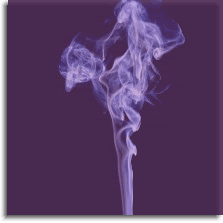 Aaron Barlow recounts his experience on the jury in a trial of Corporate Responsibility: The Case of Big Tobacco on the ePluribus Journal.
Aaron Barlow recounts his experience on the jury in a trial of Corporate Responsibility: The Case of Big Tobacco on the ePluribus Journal.
Though that trial ended almost six years ago, Aaron’s experience is particularly relevant this fall, with two RICO tobacco cases in the news.
First, on September 25, 2006, Federal Judge Jack Weinstein of the Eastern District of New York ruled that a class-action suit against the major tobacco companies can go forward. The suit, brought under the Racketeer Influenced and Corrupt Organizations (RICO) act, argues that the tobacco companies conspired to keep smokers ignorant of the fact that there is no difference in disease rates for “light” or “low tar” cigarettes and regular cigarettes. And that, in the eyes of the complaintants, constitutes fraud.
rest below the fold.
The Complaint in the second case also centers on “regular versus low-tar.” It provides an overview of the arguments being heard in both courtrooms, arguments that convinced Judge Weinstein to let the first case go forward:
Defendants, who manufacture and sell almost all of the cigarettes purchased in this country, and their co-conspirators have for many years sought to deceive the American public about the health effects of smoking. Defendants have repeatedly and consistently denied that smoking cigarettes causes disease, even though they have known since 1953, at the latest, that smoking increases the risk of disease and death. Defendants have repeatedly and consistently denied that cigarettes are addictive even though they have long understood and intentionally exploited the addictive properties of nicotine. Defendants have repeatedly and consistently stated that they do not market cigarettes to children while using advertising and marketing techniques to make their products attractive to children. Even though they have long understood the hazards caused by smoking and could have developed and marketed less hazardous cigarette products, defendants chose and conspired not to do so. Instead, they have knowingly marketed cigarettes — called “low tar/low nicotine” cigarettes — that consumers believed to be less hazardous even though consumers actually receive similar amounts of tar and nicotine as they receive from other cigarettes; and therefore these cigarettes are in fact not less hazardous than other cigarettes.
Like Judge Weinstein, the judge in this second case, Gladys Kessler, has recent ruled against the tobacco companies, going so far as to order them to stop marketing cigarettes as “light” or “low tar.”
What will happen in these two courtrooms? Of course, we don’t yet know. But Aaron’s reminiscence of serving on the jury for that earlier tobacco case — also heard by Judge Weinstein — may throw light on the on-going attempts to force responsibility for disease onto the tobacco industry through law. Like the newer ones, the case was big, potentially involving huge amounts of money and many of the same lawyers (particularly for the tobacco companies). Witnesses included Nobel laureates, a Surgeon General of the United States, and even the man the move The Insider was based on.
Given the huge damage to our society by tobacco (musician Freddie Fender, for example, just died of lung cancer), this is an issue of interest to most of us. Many have had loved ones or friends who have suffered (or are suffering) the effects of smoking–making this an issue of continuing importance.
Aaron Barlow‘s article gives the jury’s eye view of the earlier proceedings: Corporate Responsibility: The Case of Big Tobacco on the ePluribus Journal.

If you like what ePMedia’s been doing with research, reviews and interviews, please consider donating to help with our efforts.



